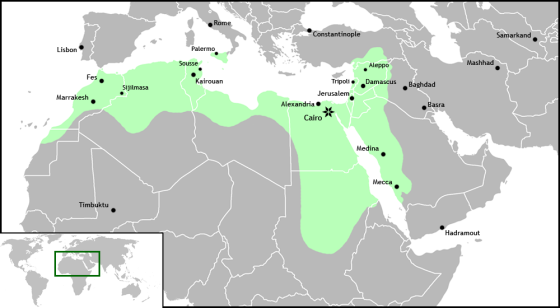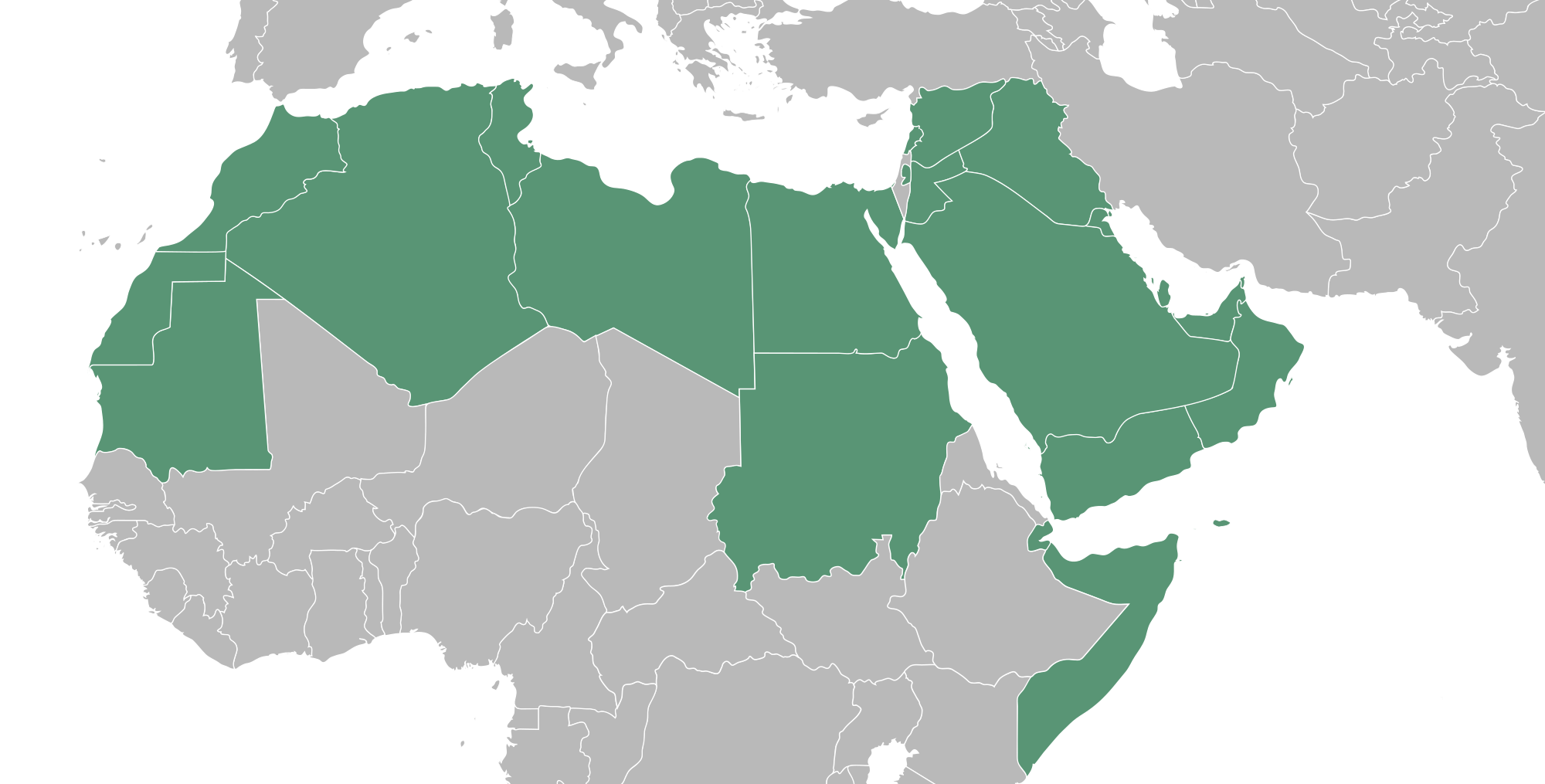1. Algeria
2. Bahrain
3. Chad
4. Comoros
5. Djibouti
6. Egypt
7. Eritrea
8. Iraq
9. Israel
10. Jordan
11. Kuwait
12. Lebanon
13. Libya
14. Mauritania
15. Morocco
16. Oman
17. Palestine
18. Qatar
19. Saudi-Arabia
20. Somalia
21. Sudan
22. Syria
23. Tunisia
25. Western Sahara
26. Yemen
Rashidun Caliphate 632-661
The Rashidun Caliphate was founded after Muhammad's death in 632. The first four caliphs were called the "Rightly Guided". The Shi'a Muslims consider Ali as the only legitimate caliph of these four men.
At its peak the Rashidun Caliphate extended from North Africa to Levant, Arabian Peninsula and Central Asia.
First four caliphs:
Abu Bakr 632-634
Umar 634-644
Uthman 644-656
Ali 656-661
| Rashidun Caliphate in 654 |
Umayyad Caliphate 661-750
Ali, the first caliph defeated the Kharijites in the Battle of Nahrawan but was assassinated by a Kharijite later. His son Hasan was elected as the next caliph but Hasan handed his title to Mu'awiyah, who became the fifth caliph and founded the Umayyad Caliphate.
Under the Umayyads, the Caliphate grew at its peak into the biggest empire ever seen in that point of history.
 |
| Umayyad Caliphate |
Abbasid Caliphate 750-1258
In 750 the Ummayad dynasty was overthrown by the Abbasids, another family of Meccan origins and the descendants from Muhammad's uncle Abbas ibn Abd al-Mutallib. The Abbasid Caliphate lost effective power in Northern Africa and Palestine to the Fatimid Caliphate.
 |
| Abbasid Caliphate |
Fatimid Caliphate 910-1171
The Fatimids extended their rule to Abbasid areas before the Abbasids limited the Fatimid rule to Egypt. The Umayyad Caliphate of Córdoba managed to keep the Fatimids outside of the Iberian Peninsula.
 |
| Fatimid Caliphate |
Mamluk Caliphate 1261-1517
In the 9th century, the Abbasids started training a loyal army consisting of Turkic Cuman, Circassian and Georgian origin known as the Mamluks. After Mongols under Hulegu Khan defeated the Abbasid dynasty in 1258, the Mamluk rulers of Egypt declared the re-establishment of the Abbasid rule in Cairo. The Abbasid rulers had little or no political powers maintaining only the symbols of authority. The Mamluks had the real power in their hands.
 |
| Mamluk Caliphate |
Ottoman Caliphate 1517-1923
In 1517, the Ottoman sultan Selim I defeated the Mamluk Sultanate and made Egypt part of the Ottoman Empire. The Ottomans conquered most of the Muslim areas during their rule and they came to be viewed as the de facto leaders of the Islamic world. The Ottoman Empire collapsed after the First World War. In 1924, the first president of the Turkish Republic, Mustafa Kemal abolished the caliphate. One major event in world history was the partitioning of the Ottoman Empire areas into several new states between 1918 and 1922.
 |
| Ottoman Empire at its greatest extent |
Sources:
https://en.wikipedia.org/wiki/Caliphate
Maailman maat liput ja historya by Kimmo Kiljunen

No comments:
Post a Comment